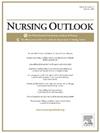Relationship between nurse staffing during labor and cesarean birth rates in U.S. hospitals
IF 4.1
2区 医学
Q1 NURSING
引用次数: 0
Abstract
Background
Cesarean birth increases risk of maternal morbidity and mortality.
Purpose
Examine the relationship between labor and delivery staffing and hospital cesarean and vaginal birth after cesarean (VBAC) rates.
Methods
Survey of U.S. labor nurses in 2018 and 2019 on adherence to AWHONN nurse staffing standards with data linked to American Hospital Association Survey data, patient discharge data, and cesarean birth and VBAC rates.
Findings
In total, 2,786 nurses from 193 hospitals in 23 states were included. Mean cesarean rate was 27.3% (SD 5.9, range 11.7%–47.2%); median VBAC rate 11.1% (IQR 1.78%–20.2%; range 0%–40.1%). There was relatively high adherence to staffing standards (mean, 3.12 of possible 1–4 score). After adjusting for hospital characteristics, nurse staffing was an independent predictor of hospital-level cesarean and VBAC rates (IRR 0.89, 95% CI 0.84–0.95 and IRR 1.58, 95% CI 1.25–1.99, respectively).
Discussion
Better nurse staffing predicted lower cesarean birth rates and higher VBAC rates.
Conclusion
Hospitals should be accountable for providing adequate nurse staffing during childbirth.
美国医院分娩期间护士配备与剖宫产率的关系
背景:剖宫产增加了产妇发病和死亡的风险。目的:探讨分娩人员配备与医院剖宫产和剖宫产后阴道分娩(VBAC)率的关系。方法:对2018年和2019年美国分娩护士遵守AWHONN护士配备标准的情况进行调查,数据与美国医院协会调查数据、患者出院数据、剖宫产率和VBAC率相关。调查结果:总共包括来自23个州193家医院的2786名护士。平均剖宫产率为27.3% (SD 5.9,范围11.7% ~ 47.2%);中位VBAC率11.1% (IQR 1.78%-20.2%;范围0% - -40.1%)。对人员配备标准的遵守程度相对较高(1-4分的平均值为3.12)。在调整医院特征后,护士配备是医院级剖宫产率和VBAC率的独立预测因子(IRR分别为0.89,95% CI 0.84-0.95和1.58,95% CI 1.25-1.99)。讨论:更好的护士配备预示着更低的剖宫产率和更高的VBAC率。结论:医院应负责在分娩过程中提供足够的护理人员。
本文章由计算机程序翻译,如有差异,请以英文原文为准。
求助全文
约1分钟内获得全文
求助全文
来源期刊

Nursing Outlook
医学-护理
CiteScore
6.20
自引率
7.00%
发文量
109
审稿时长
25 days
期刊介绍:
Nursing Outlook, a bimonthly journal, provides innovative ideas for nursing leaders through peer-reviewed articles and timely reports. Each issue examines current issues and trends in nursing practice, education, and research, offering progressive solutions to the challenges facing the profession. Nursing Outlook is the official journal of the American Academy of Nursing and the Council for the Advancement of Nursing Science and supports their mission to serve the public and the nursing profession by advancing health policy and practice through the generation, synthesis, and dissemination of nursing knowledge. The journal is included in MEDLINE, CINAHL and the Journal Citation Reports published by Clarivate Analytics.
 求助内容:
求助内容: 应助结果提醒方式:
应助结果提醒方式:


